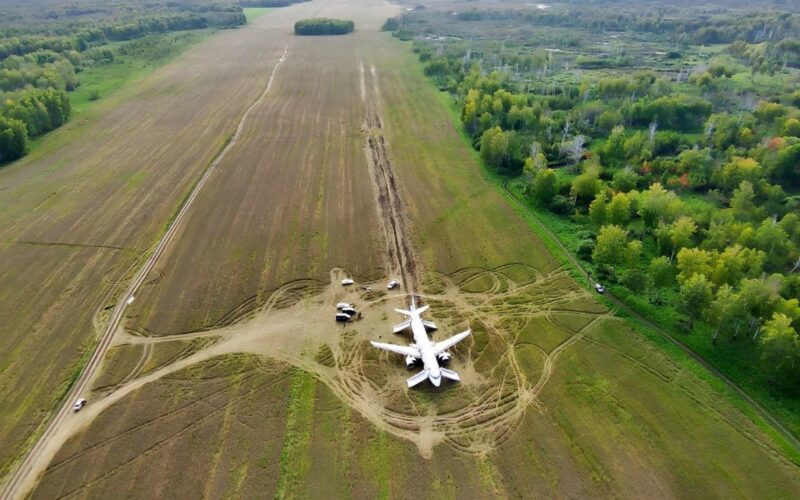Speculation is continuing to grow on how Ural Airlines and Russian government officials will free its Airbus A320 from a field in Russia.
The A320 was forced to land in a field just outside of Novosibirsk, in southern Siberia, on September 12, 2023, after running low on fuel.
The aircraft had been due to land at Omsk Tsentralny Airport (OMS) after flying from Sochi International Airport (AER) but was unable to land and requested to go to the Novosibirsk Airport (OVB) instead.
Following the incident, it was reported that the Airbus A320 experienced a failure of its hydraulic system as it approached OMS, although passengers on the flight were allegedly told the diversion was due to unflyable weather conditions.
As flight U61383 headed towards OVB, the captain became fearful that the aircraft would not make it to its destination and took the extreme decision to land in a field.
According to the Russian Ministry of Emergency Situations, there were 167 people on board, including 23 children and 6 crew members.
“The flight increased fuel consumption, and the flight commander realized that there might not be enough fuel to land at Novosibirsk Airport. So, he decided to land the aircraft in a field with landing gear extended and he did so successfully,” Sergey Skuratov, CEO of Ural Airlines, said.
According to Interfax, Ural Airlines are yet to make a final decision on the future of the aircraft, and it currently remains intact in the field with 24-hour security guarding.
Oleg Konyuk, the head of the region where the field is located, told the Russian news agency the plane could remain there for a month and that the landing gear, which sunk into the ground during landing, is raised on platforms.
Previously in 2019, when a Ural Airlines Airbus A321 was forced to land in a field due to a bird strike damaging both engines, the decision was made to dismantle the plane and scrap it all.
This may have been because the aircraft was damaged beyond repair or the operation to salvage it was not worth the money, time and effort.
It is quite possible that the Airbus A320 will suffer the same fate due to its age, but the decision to scrap the A321 was made much sooner after the crash in 2019.
The option gaining most traction on social media is that the aircraft, if relatively undamaged, could be flown out of the field.
However, this would require more time to pass to allow the ground to harden for the idea to even be feasible.
A third option would be to break up the aircraft into smaller parts and transport the pieces by land so that it can be reconstructed elsewhere.
Whatever decision is reached a key consideration will of course be money but also Western sanctions that are making life for the Russian aviation industry difficult.
⚡️In 🇷🇺Russia, an Airbus passenger plane of Ural Airlines failed to fly from Sochi to Omsk and made an emergency landing in a field due to technical problems
— 🇺🇦Ukrainian Front (@front_ukrainian) September 12, 2023
There were 170 passengers on board, including 23 children. No victims.
Initially, the reason for the emergency landing… pic.twitter.com/gQJUzvuKfk

